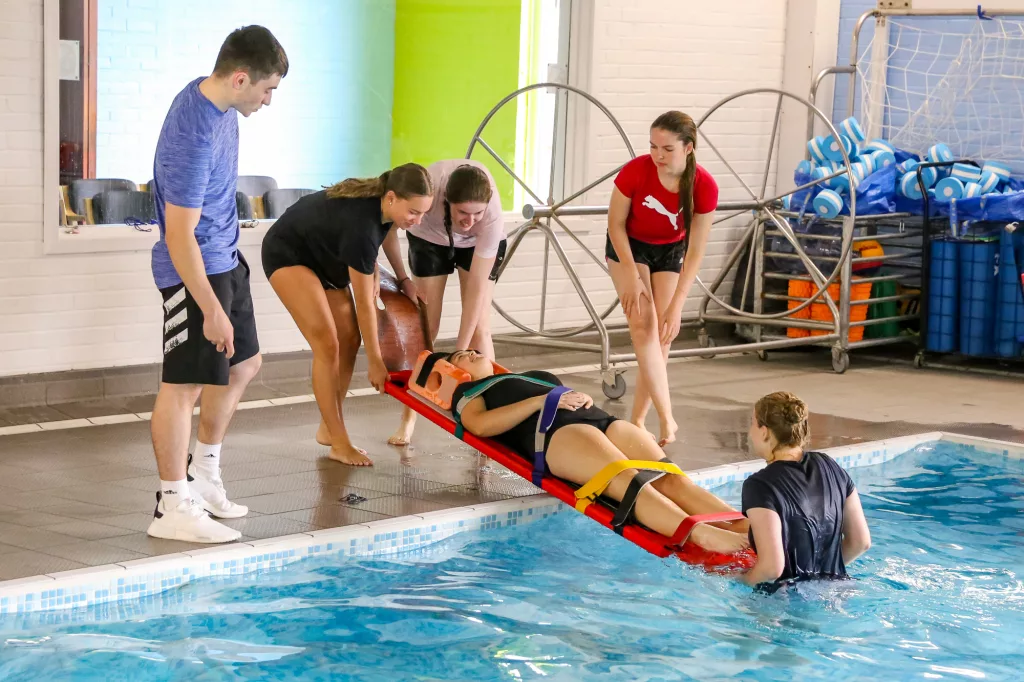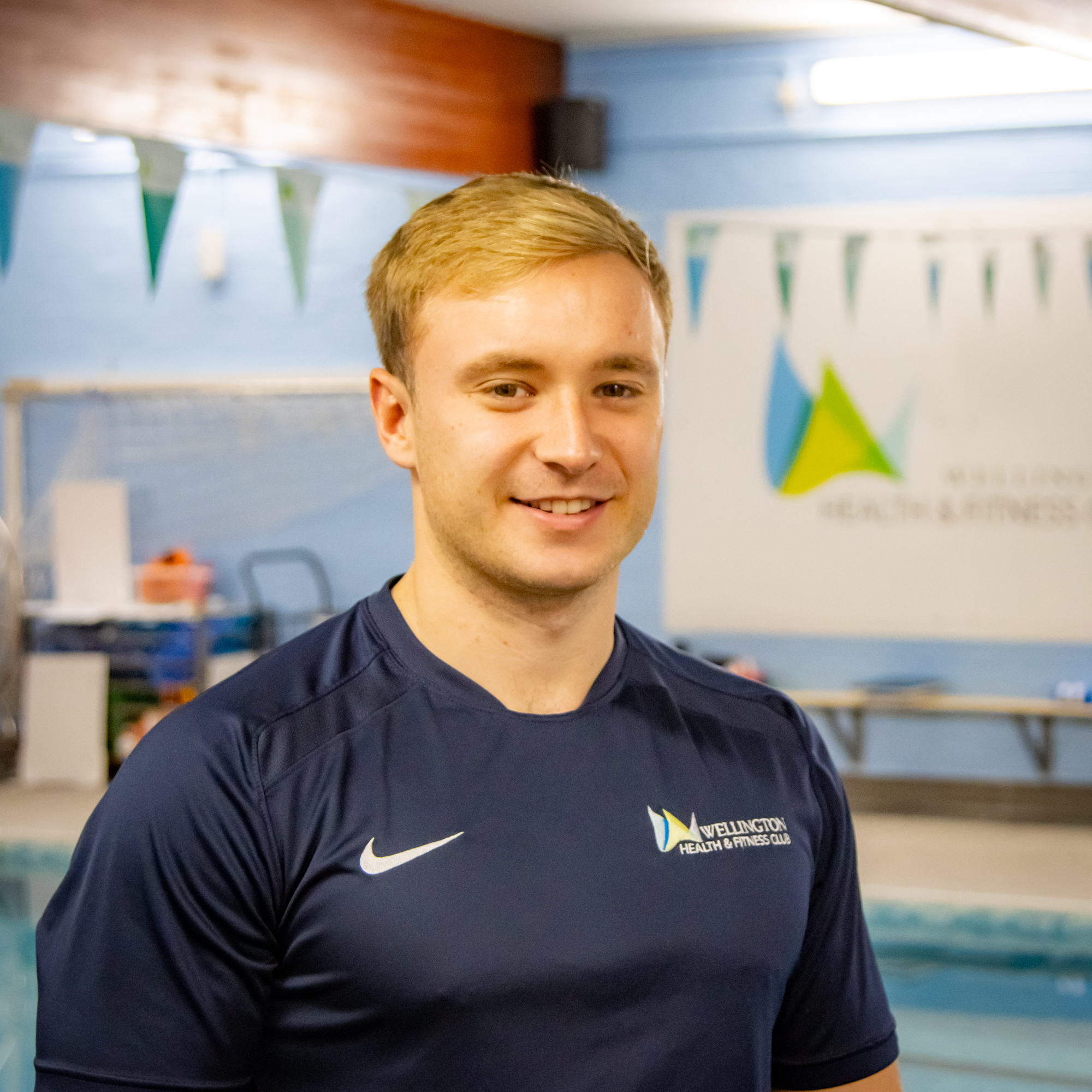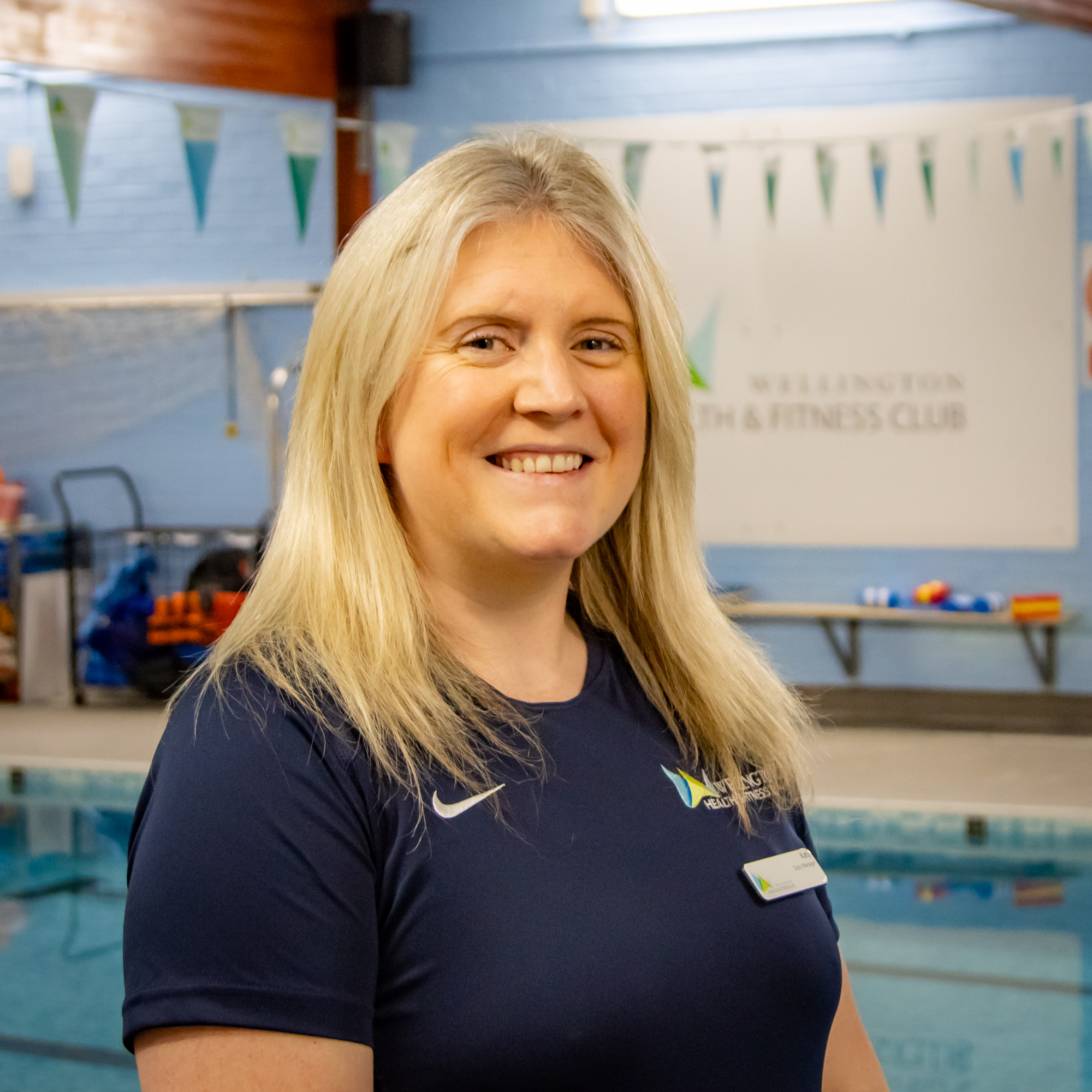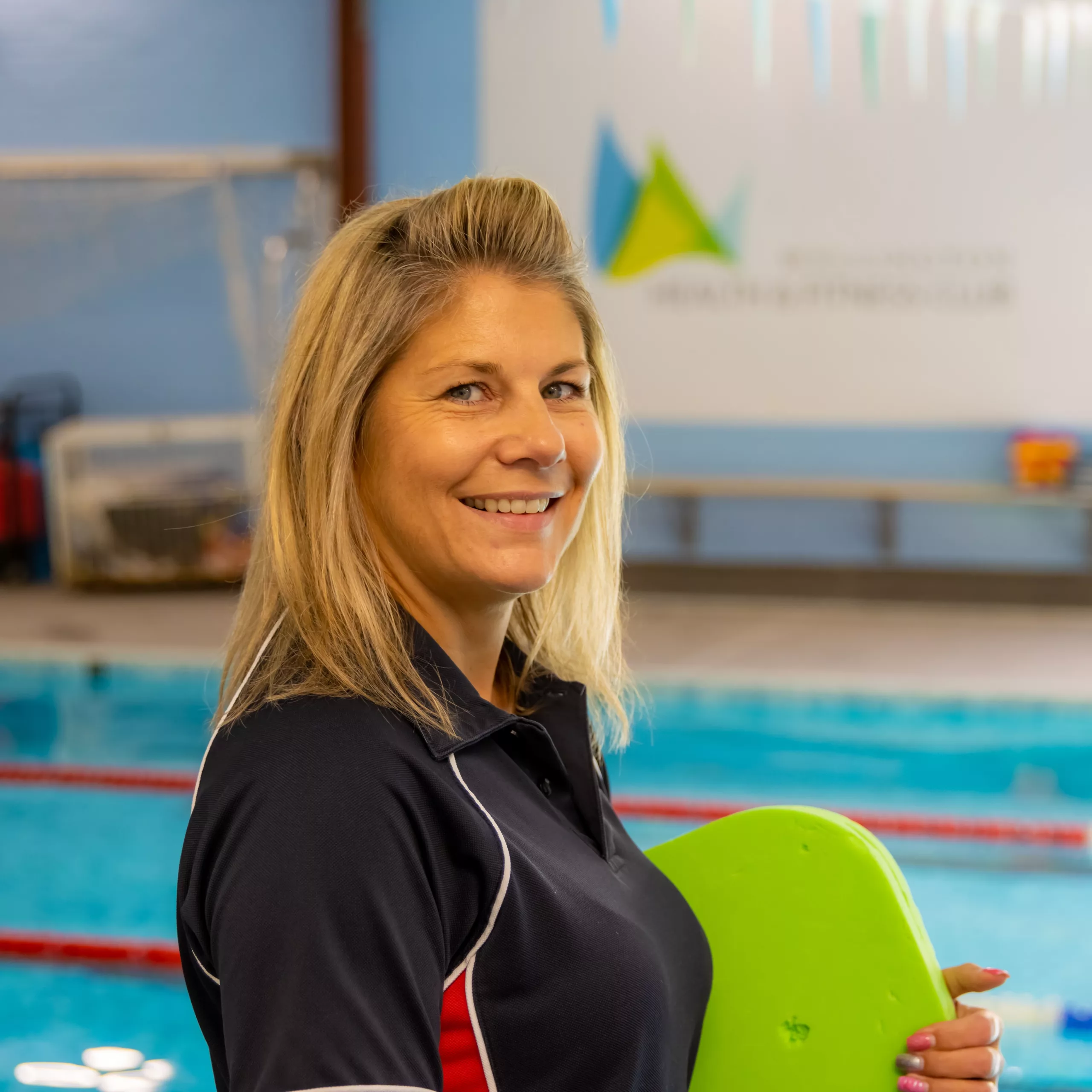Swim School
LEARN THE BASICS OR BOOST YOUR SKILLS
It’s important that you can feel confident your little one can enjoy the water safely, so why not get in touch to ask about our swimming lessons? They are suitable for children aged between 4 and 14, and are run on Wednesdays, Thursdays, Saturdays and Sundays.
Our swimming lessons are run by fully qualified instructors and cover Beginners, Improvers 1, Improvers 2, Advanced & Rookie Lifeguard. From the non swimmer to the club swimmer, we have the class for your children. Not only a fun safe environment to learn swimming but also following the ASA National Plan for teaching. Your child will gain safety awareness, quality technique and a level of all-round proficiency. All instructors are ASA level 1 & 2 qualified.
Our teacher to pupil ratios are as follows: Beginners – 1-10 with two water helpers in the pool to assist. Improves 1 & 2 – 1-12, Advance – 2-25 and Rookie Lifeguard 2-20
Children progressing though the ASA levels will also obtain merit badges and certificates showing their achievements as well as end of term reports so that you as parents can also gain an understanding of how your child is doing.
For all enquiries about group swimming lessons, please register for an account using the following link, and we will contact you as soon as possible: https://morleisure.co.uk/MyLessons/MSL_Registration.asp?oid=397.
If your enquiry is regarding private lessons, please contact Katy directly by e-mail: khammans@wellingtonfitness.co.uk
1 to 1 , 2 to 1 and Adult lessons can also be arrange directly with our team.
Meet our Teachers
I just want to say a massive thank you for all the work you put in with Sarah. She looks forward to your lessons and I can see such an improvement. Watching her swimming independently across the pool today had me welling up. It’s so rare to find people who understand and nurture children with needs but you do. Thank you so much.
Parent
HOW DO I GET MY CHILD
ON A SWIM COURSE?
The dates from which you are able to enroll on one our Swim Schools depend on which priority category you fall in to:
Priority 1 – For existing course members who will remain on the same course, date and time.
Priority 2 – For existing course members who are moving to a different level on a different day
Priority 3 – For those enrolling onto the Swim School for the first time
Swim School
Dates for April 2025 Coming Soon
For those who have children that attend our swim school enrollment dates are listed here:
Priority 1 – 26 June – 09 July
Priority 2 – 10 July – 20 July
Priority 3 – 12 August
Course fees are:
Wed Beg/ Imp 1 / Imp 2 – £102.00 (30 min class).
Advanced classes – £204.00 (60 min class)
Thurs Beg / Imp 1 £102
Rookie Lifeguard (Bronze & Silver) – £156.00 (60 min class).
Rookie Gold – £213.00 (60 min class).
Sat Beg/ Imp 1 / Imp 2 – £93.50 (30 min class).
Sun Beg/ Imp 1 – £93.50 (30 min class).
Please be aware that all courses are non-refundable.
The January – April course dates:
Wednesday 08/01/25 – 02/04/25
Thursday 09/01/25 – 03/04/25
Saturday 11/01/25 – 05/04/25
Sunday 12/01/25 – 06/04/25
Half Term: Wednesday Feb 19th and Thursday 20th
Half Term Saturday & Sunday Feb 15/16th AND 22/23rd
Learn to Swim Stage 1-7 Awards Outcomes
-
Stage 1
By completing this Award, with or without floatation equipment or support, you will be able to:
1. Enter the water safely.
2. Move forward for a distance of 5 metres, feet may be on or off the floor.
3. Move backwards for a distance of 5 metres, feet may be on or off the floor.
4. Move sideways for a distance of 5 metres, feet may be on or off the floor.
5. Scoop the water and wash the face.
6. Be comfortable with water showered from overhead.
7. Move from a flat floating position on the back and return to standing.
8. Move from a flat floating position on the front and return to standing.
9. Push and glide in a flat position on the front from a wall.
10. Push and glide in a flat position on the back from a wall.
11. Give examples of two pool rules.
12. Exit the water safely.
Head to our Learn to Swim Stage 1 page to find out more about this Award. -
Stage 2
By completing this Award, with or without floatation equipment or support, you will be able to:
1. Jump in from poolside safely.
2. Blow bubbles a minimum of three times rhythmically, with nose and mouth submerged.
3. Move from a flat floating position on the back and return to standing without support.
4. Move from a flat floating position on the front and return to standing without support.
5. Push from a wall and glide on the back – arms can be by the side or above the head.
6. Push from a wall and glide on the front with arms extended.
7. Travel using a recognised leg action with feet off the pool floor on the back for 5 metres, without the use of floatation equipment.
8. Travel using a recognised leg action with feet off the pool floor on the front for 5 metres, without the use of floatation equipment.
9. Perform a tuck to rotate from a flat floating position on the front, to a back floating position, then return to standing.
10. Perform a tuck to rotate from a flat floating position on the back, to a front floating position, then return to standing.
11. Perform a log roll from the back to the front.
12. Perform a log roll from the front to the back.
13. Exit the water without support.
Head to our Learn to Swim Stage 2 page to find out more about this Award. -
Stage 3
By completing this Award, with or without floatation equipment or support, you will be able to:
1. Jump in from poolside and submerge.
2. Sink, push away from wall and maintain a streamlined position.
3. Push and glide on the front with arms extended and log roll onto the back.
4. Push and glide on the back with arms extended and log roll onto the front.
5. Travel 5 metres on the front, perform a tuck to rotate onto the back and return on the back.
6. Fully submerge to pick up an object.
7. Correctly identify three of the four key water safety messages.*
8. Push and glide and travel 10 metres on the back.
9. Push and glide and travel 10 metres on the front.
10. Perform a tuck float and hold for three seconds.
11. Exit the water without using steps.
*The four key water safety messages include: 1. Always swim in a safe place. 2. Always swim with an adult. 3. If you fall in, float, breathe, relax. 4. If someone else in trouble, call 999/112. -
Stage 4
By completing this Award, with or without floatation equipment or support, you will be able to:
1. Perform a sequence of changing shapes (minimum of three) whilst floating on the surface and demonstrate an understanding of floating.
2. Push and glide from the wall towards the pool floor.
3. Kick 10 metres backstroke (one item of equipment optional).
4. Kick 10 metres front crawl (one item of equipment optional).
5. Kick 10 metres butterfly on the front or on the back.
6. Kick 10 metres breaststroke on the front (one item of equipment optional).
7. Perform a head first sculling action for 5 metres in a flat position on the back.
8. Travel on back and log roll in one continuous movement onto front.
9. Travel on front and log roll in one continuous movement onto back.
10. Push and glide and swim 10 metres, choice of stroke is optional.
Head to our Learn to Swim Stage 4 page to find out more about this Award. -
Stage 5
By completing this Award you will be able to:
1. Perform a flat stationary scull on the back.
2. Perform a feet first sculling action for 5 metres in a flat position on the back.
3. Perform a sculling sequence with a partner for 30-45 seconds to include a rotation.
4. Tread water for 30 seconds.
5. Perform three different shaped jumps into deep water.
6. Push and glide and swim 10 metres backstroke (performed to Swim England expected standards).
7. Push and glide and swim 10 metres front crawl (performed to Swim England expected standards).
8. Push and glide and swim 10 metres breaststroke (performed to Swim England expected standards).
9. Push and glide and swim 10 metres butterfly (performed to Swim England expected standards).
10. Perform a handstand and hold for a minimum of three seconds.
11. Perform a forward somersault.
12. Demonstrate an action for getting help.
Head to our Learn to Swim Stage 5 page to find out more about this Award. -
Stage 6
By completing this Award you will be able to:
1. Give two examples of how to prepare for exercise and understand why it is important.
2. Sink, push off on side from the wall, glide, kick and rotate into backstroke.
3. Sink, push off on side from the wall, glide, kick and rotate into front crawl.
4. Swim 10 metres wearing clothes.
5. Push and glide and swim front crawl to include at least six rhythmical breaths.
6. Push and glide and swim breaststroke to include at least six rhythmical breaths.
7. Push and glide and swim butterfly to include at least three rhythmical breaths.
8. Push and glide and swim backstroke to include at least six regular breaths.
9. Push and glide and swim 25 metres, choice of stroke is optional (performed to Swim England expected standards).
10. Perform a ‘shout and signal’ rescue.
11. Perform a surface dive.
Head to our Learn to Swim Stage 6 page to find out more about this Award. -
Stage 7
By completing this Award you will be able to:
1. Push and glide and swim 25 metres backstroke (performed to Swim England expected standards).
2. Push and glide and swim 25 metres front crawl (performed to Swim England expected standards).
3. Push and glide and swim 25 metres breaststroke (performed to Swim England expected standards).
4. Push and glide and swim 25 metres butterfly (performed to Swim England expected standards).
5. Perform a movement sequence (linking skills with strokes and sculls) of one minute duration, in a group of three or more, incorporating a number of the following skills:Sculling: head first, feet first Rotation: forward or backward somersault, log roll Floating: star on the front or on the back, tuck float, create own Eggbeater: Moving, lifting one or both arms out of the water
6. Perform a sitting dive or dive.
7. Push and glide and swim 50 metres continuously using one stroke (performed to Swim England expected standards).
8. Push and glide and swim 100 metres, using a minimum of three different strokes (performed to Swim England expected standards).
9. Tread water using eggbeater action for 30 seconds.
10. Complete an obstacle course (using minimum of four objects) with feet off the pool floor throughout.
If you would like to know more about the swimming levels please visit the ASA Website.
ROOKIE LIFEGUARD AWARDS
Built into the programme are lessons in valuable survival, rescue and sports skills…all delivered in an exciting way that will get children involved and motivated. The course can run parallel to your child’s current swimming lessons and will enhance the skills they learn in the pool.
For many of our Rookie Lifeguards, our programme offers the first opportunity to explore water safety, gradually gaining independence and confidence while learning vital life skills. Our programme will inspire and embolden your child, helping them keep themselves, their friends and their family safe in the water through a range of fun activities that lead towards a series of awards.
Rookie Lifeguard is aimed at children – though the skills learned through the course of the programme are just as valuable to people of all ages. The scheme begins with Stage 1 of the Bronze Award and progresses to Stage 3 of the Gold Award, starting off at an ability level suitable for brand-new swimmers and progressing to the level where our Rookie Lifeguards perform impressive lifesaving tows.
Rookie Lifeguard is part of the Swim England Learn to Swim Programme, although it can also be run as a stand-alone course by junior lifesaving clubs, leisure centres, swimming schools and as part of school swimming lessons. The Rookie Lifeguard programme fulfils all of the Key Stage 2 water safety elements of the National Curriculum and is taught by RLSS UK approved instructors.
Click here to read more about our RLSS UK’s Rookie Lifeguard programme.
NATIONAL POOL LIFEGUARD
QUALIFICATION
As well as our popular Swim School sessions, which run throughout the year, the Health & Fitness Club also runs NPLQ courses. The NPLQ covers all elements of Pool Rescue Techniques, Lifeguarding Theory, First Aid and CPR. The course is physically demanding and will include swimming to set times, lifting casualties and diving to the deepest part of the swimming pool. Training and assessment for the NPLQ is in three sections and all must be successfully passed to attain the qualification.
The NPLQ is a course for anyone aged 16 and over. In order to be eligible for the course, entrants must be able to: Jump or dive into deep water, swim 50 metres in 1 minute or less, swim 100 metres continuously on your front and then on your back and tread water for 30 seconds.
Our NPLQ life-guarding course is limited to a maximum of 12 places;
NPLQ Lifeguard Course running:
Next Course
27th – 31st August 2024
For further info contact Gaby on GMMC@wellingtonfitness.co.uk or phone 01344 444 244 to register your interest in the next course.
Cost: £230 for members OR £250 for non members





